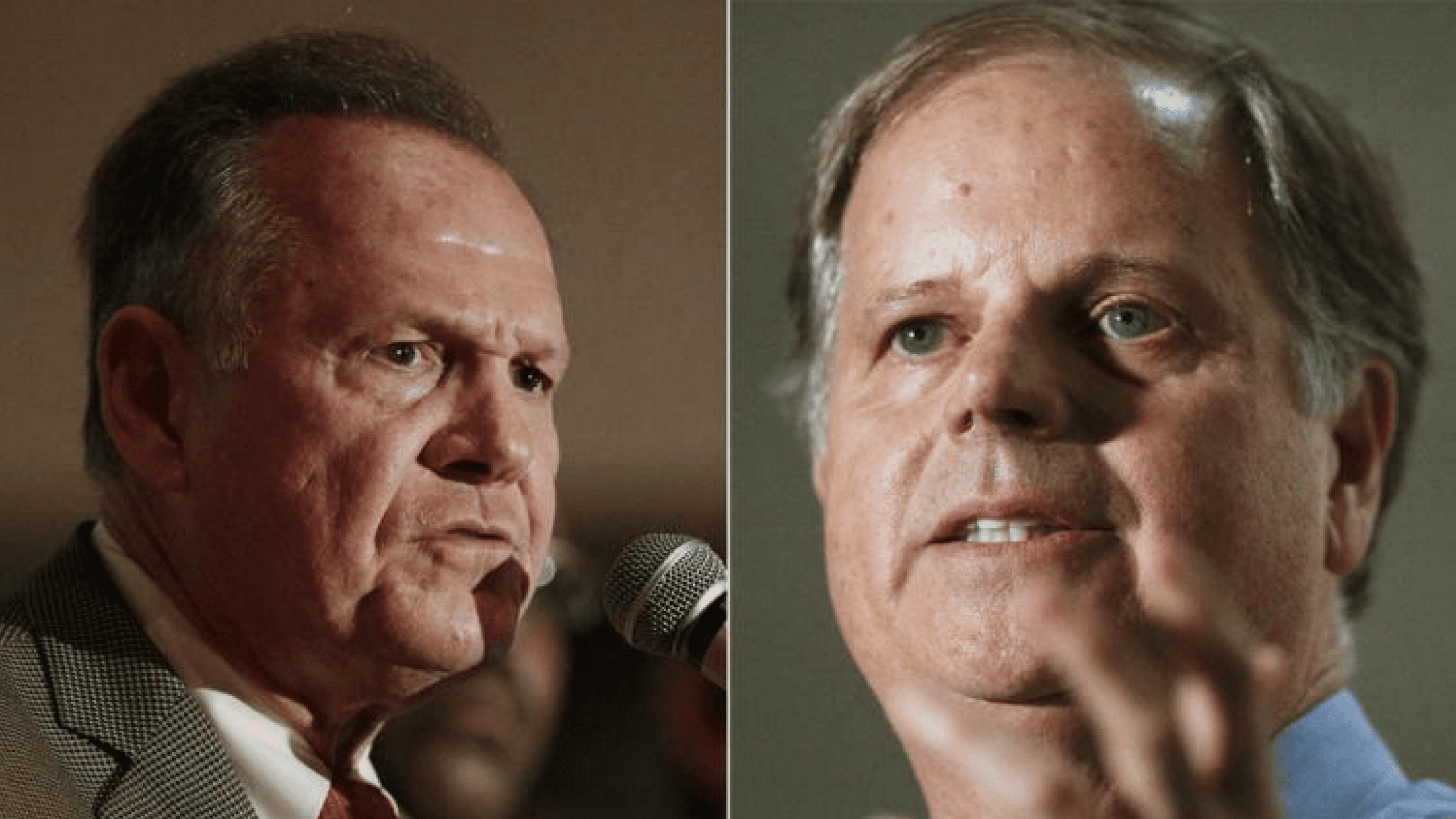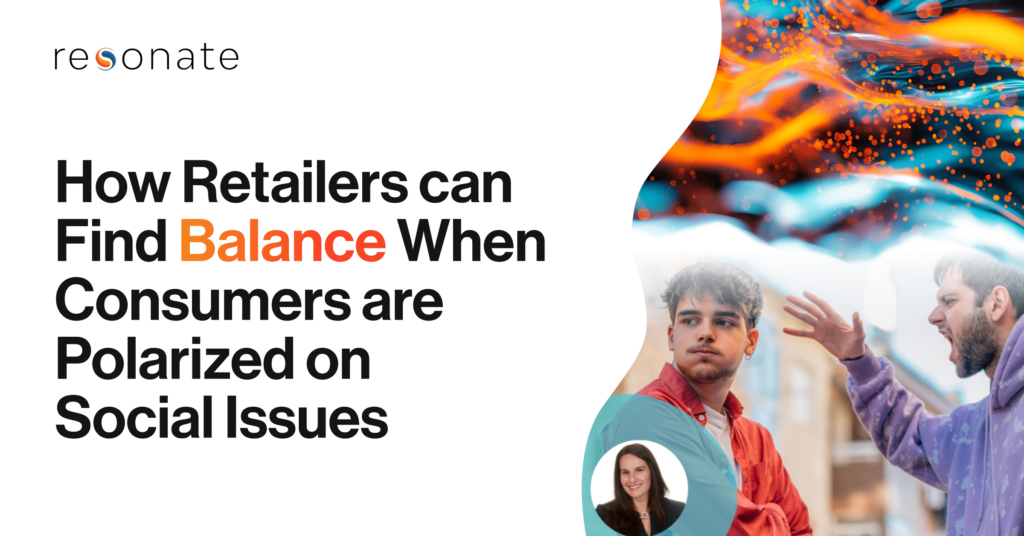Deep in the Heart of Dixie is an online conservative media bubble made up of nearly half a million Alabamians.
The individuals encompassed by this media bubble have at least one thing in common: the majority of news and facts they consume – in general as well as specifically in regards to allegations against Republican candidate for Senate, Roy Moore, – are the products of right-wing publications. Collectively, the constellation of publishers that comprise the conservative media bubble function as a private channel of communication with the Republican base, and have enabled Roy Moore to regain traction through a combination of spin and deflection without the burden of a counter narrative from a sophisticated opposition. For many voters inside this bubble, the conservative narrative is the only reporting they’ve encountered on the topic.
At Resonate, we combined the nation’s largest independent voter research with anonymized contextual, real-time analysis of more than 15b online events a day, leveraging artificial intelligence and advanced predictive modeling to verify the existence of this bubble and deeply analyze its audience at an individual-level. The findings presented here are untainted by political bias and rather a fundamental exercise in objectivity assessing outcomes.
The result is data that strongly indicates that it’s past time for campaigns, especially those in tight races, to think about cross-party political media bubbles differently. And it starts right now in the Alabama special.
Not your average media bubble
Common knowledge says political media bubbles are formed through self-selection among ideologically driven audiences and represent impenetrable groups with no signs of independent voting behavior. For these reasons, campaigns have viewed bubbles floating on opposing political spectrums as lost causes, leaving the voters within them to operate freely in a world of alternate facts and selectively edited narratives. However, our analyses at Resonate reveal these groups to be surprisingly diverse coalitions and differences in issue interest, life stages, and socioeconomic status provide a strong foundation for nuanced messaging.
What we have here in Alabama is by no means your traditional conservative media bubble. Not by a long shot.
Barack Obama voters live here. Pro-choice voters live here. Our models statistically prove that these are real audiences currently inhabiting this space in large numbers.
The reality for Roy Moore’s opponent, Doug Jones, and the Democrats is now this: there are not enough standard Democrats to win the special Senate election in Alabama. The Jones campaign will need to make precise appeals to voters who consume the majority of their news through conservative channels to tip the scale. Reaching those voters begins with knowing where to look and more importantly, what to say.
The Counter Narrative in the Alabama Conservative Media Bubble
Before analyzing the voters inside the conservative media bubble, we find it illustrative to pair the emerging conservative talking points alongside their impacts to the Alabama special election.
The primary narratives spreading through the conservative media bubble have provided a measurably successful counter narrative to the multiple damaging Moore allegations of sexual assault and molestation reported by mainstream sources.
The conservative counter narrative essentially maintains that all of the women who have come forward are lying as part of a left-wing conspiracy to destroy the candidacy and reputation of Moore, a dedicated public servant victimized for his conservative views and Christian values. These statements by rule omit critical details including that it was community-wide knowledge Roy Moore was banned from a shopping mall for harassing young women or that is wife was in the same high school class as one of the women making the allegations.
This disruption narrative that is almost exclusively informing over 321k online Alabama residents about Roy Moore’s character and past is a powerful one. It has served as a life jacket for the Moore campaign that all but two weeks ago looked dead in the water amidst the wave of accusations. If you look to the roller coaster polling numbers this race has produced you can see right into the power of the bubble.
Before the Washington Post broke the story on the explosive allegations, Moore led Jones by roughly 9 points according to the Real Clear Politics September-October polling average. At the time, this came as no surprise in one the most conservative states in the union that hasn’t sent a Democrat to the Senate in more than two decades. Although once the stories broke on Moore’s alleged misconduct, a Jones victory seemed inevitable…almost.
In the days following the original report more women came forward against Moore and additional members from the community went on record accusing Moore of similar predatory behavior. At this point, leading congressional members from Moore’s own party had heard enough and called for Moore to step out of the senate race immediately, including Senate Majority Leader McConnell and Alabama’s senior Senator, Richard Shelby.
As a direct result of the reports and Moore’s own party abandoning him, the polls immediately shifted in Jones’ favor in a big way. In a Fox News poll (Yes, Fox news) Democrat Doug Jones now led by 8 points, representing a 17 point jump from the September-October polling averages.
Now just two weeks later after Jones’ surge and with Election Day around the corner, the race has evened out and more recent polls have Moore back in the lead by as much as 6 points.
What happened? The counter narrative in the conservative media bubble worked and successfully controlled voter sentiment to a level that put Moore back in the lead.
A Jones Path to Victory: Identifying and Targeting the Bubble’s Persuadables
In a race where Jones and the Democrats now need every persuadable vote possible to defeat Moore in Alabama, they need to penetrate this conservative media bubble and change the conversation. This can be done by identifying the large segments of persuadables and leveraging their most relevant targetable attributes to deliver a message that releases them from the bubble and is worthy of their vote.
Of the over 321k Alabamians trapped in this bubble, Jones and Democrats should start with the low hanging fruit. These are the voters that already disagree with Moore on policy and susceptible to Democratic messaging. Our data shows that these audiences include:
- 2012 Barack Obama Voters: 26% of the individuals inside the bubble voted for Barack Obama in his reelection campaign. The Jones campaign should by no means concede 1 of these 83k plus Obama voters to a conservative politician like Roy Moore.
- Pro-Choice Supporters: 56% of the individuals inside the bubble also support pro-choice policies and upholding the Supreme Court’s Roe v Wade decision. This puts this large audience in direct opposition to Roy Moore’s central campaign promise to repeal Roe v Wade and outlaw abortion.
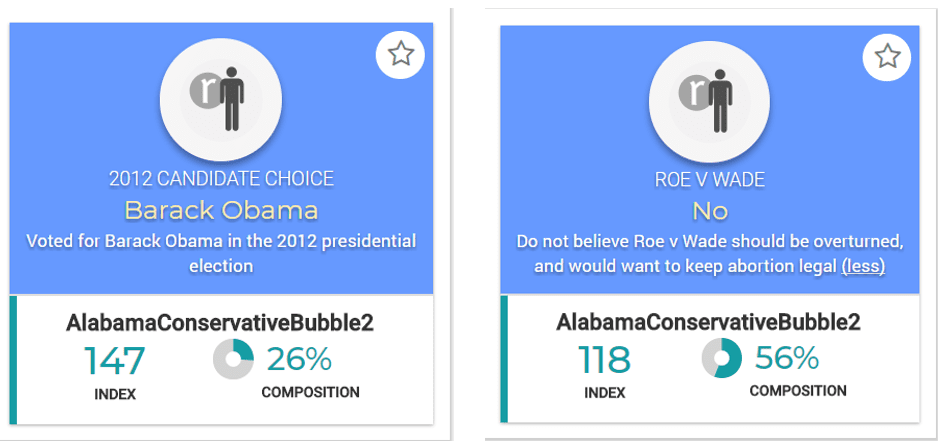
Our analytics also identify specific audiences outside of Moore’s core constituency and those who are more likely to be sensitive to the mainstream media’s reporting on the Moore allegations.
For example, within the bubble we see:
- Non-religious Voters: 33% of individuals in the bubble rarely attend religious services and when indexed against the average Alabama resident, they are 32% more likely not to be in Church on Sundays. This is not an average Roy Moore voter who may have a pastor who has endorsed Moore or choose to vote along religious lines.
- Parents or guardians to Girls: A staggering 70% of this audience is either a parent or a guardian to a girl. By targeting this niche demographic audience with facts on Moore’s past from outside-the-bubble media sources, the Jones campaign can connect with their parental values and sense of responsibility.
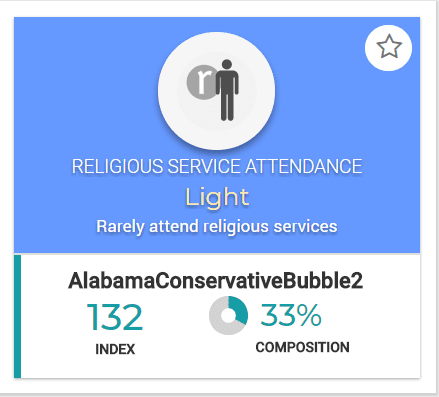
Tight and unpredictable races like the Alabama special election are not just a matter of turning out the base. These races come down to who can find and win enough persuadables to cross the finish line. For Jones and the Democrats, this path to victory is through the heart of a conservative media bubble that has trapped a large segment of his persuadables. If he wants to win, he needs to go out and get them.
Bonus data point: 89% of the Alabama conservative media bubble can be targeted on Facebook.
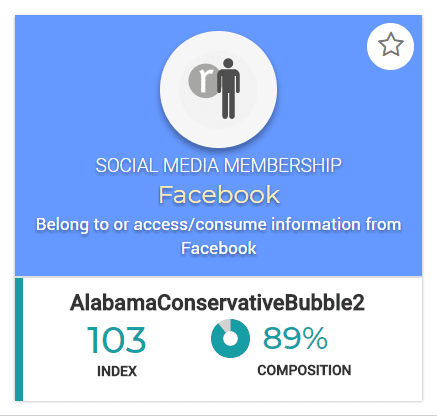
If you want to learn more about Resonate’s ability to deeply analyze and target niche persuadable political audiences that deliver campaign wins contact Resonate at success@resonate.com.
